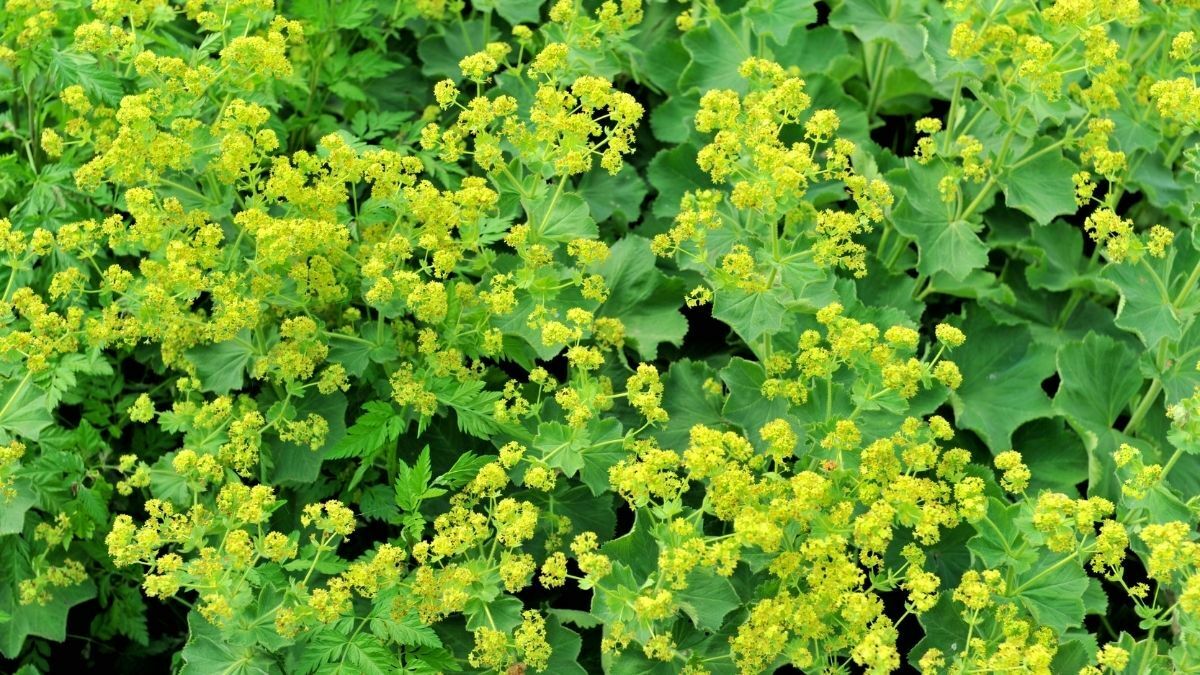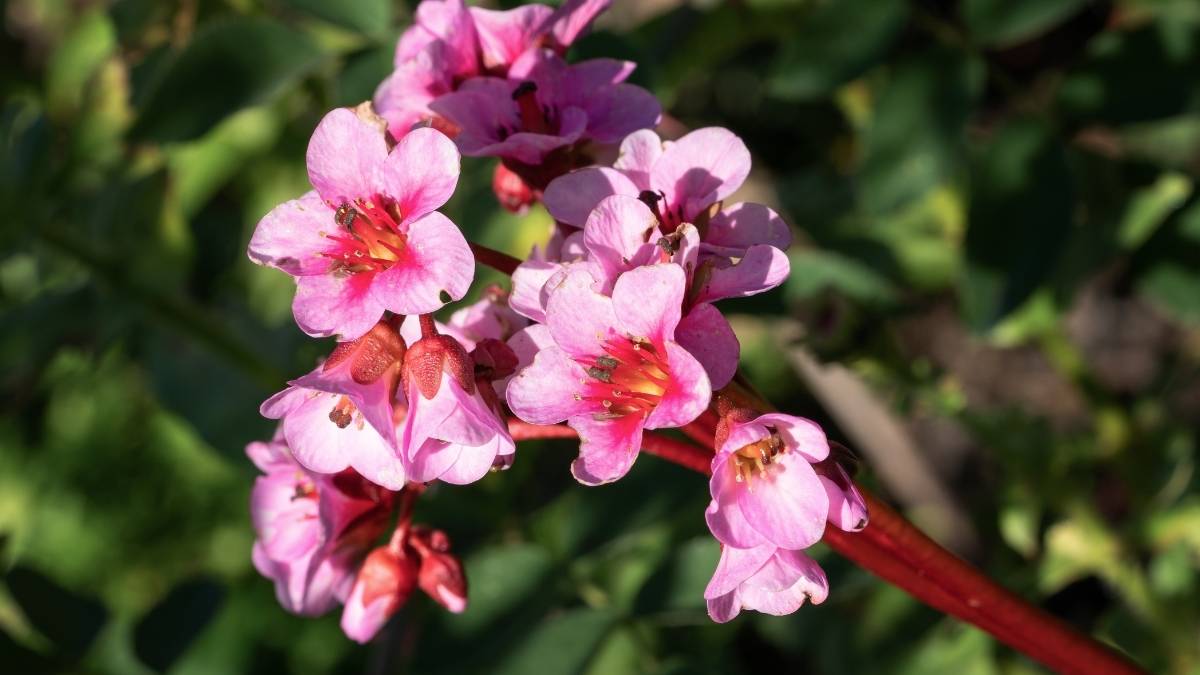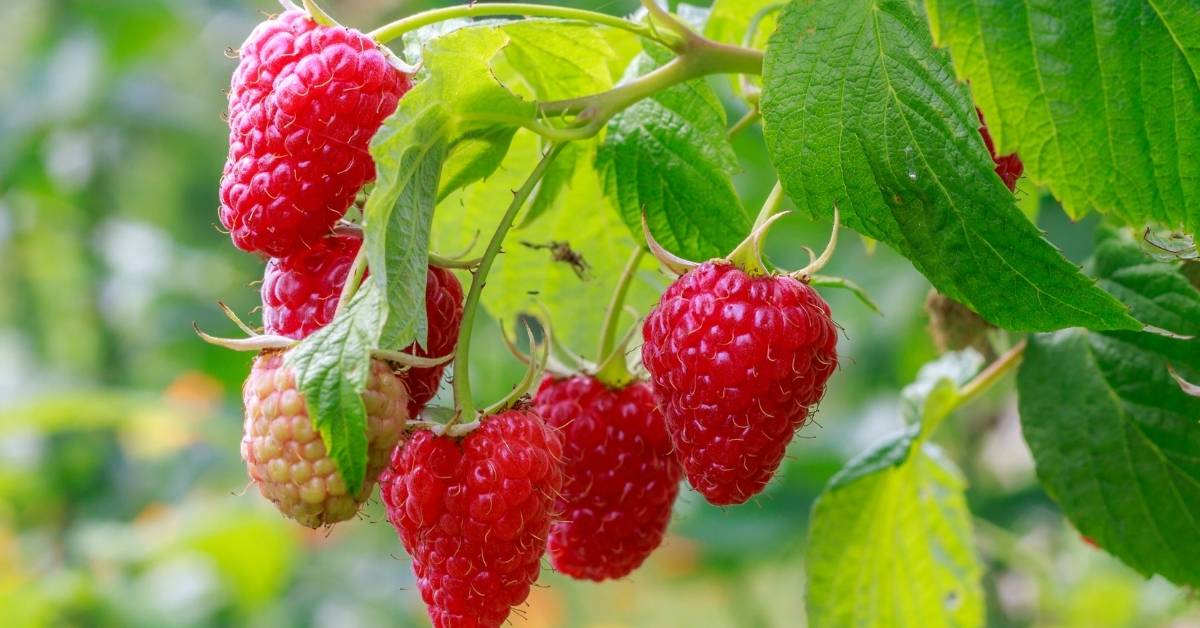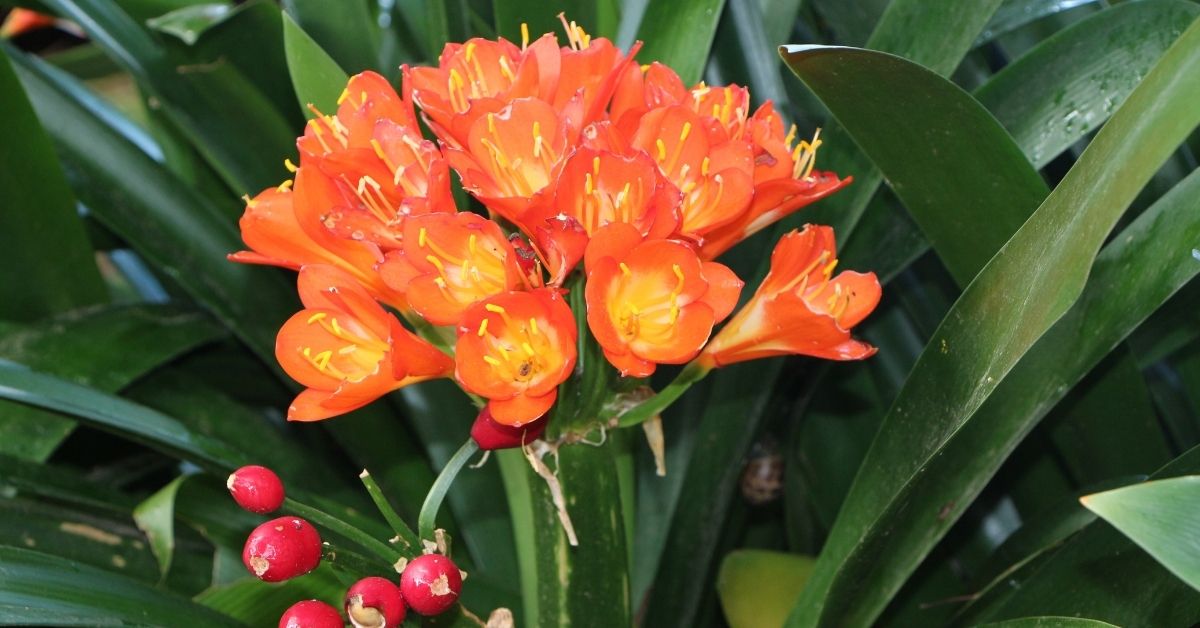There are, perhaps surprisingly, a good number of perennials that grow well in shady conditions. Here are 9 plants for shady spots which you can pick and start growing today.
For a dry, shady spot such as near a hedge or under the canopy of a large, evergreen tree, Alchemilla Mollis with delicate sprays of lime-green flowers in summer, Iris foetidissima – evergreen, sword-shaped leaves and showy bright red seeds in pods throughout the winter, and Symphytum (Comfrey) will all thrive.
With more moisture, the range increases. Here is a small selection of plants to grow in shady areas:

Plants for shady spots
Bergenia with large evergreen leaves and spikes of flowers – either pink or white – in spring and then often repeated later in the year. The variety ‘Silberlicht’ is particularly good, the white flowers shine in a dark corner.
Epimediums make an excellent ground cover; the heart-shaped leaves, tinted bronze when young, suppress weeds well.
You might like to see this: 10 Foods that help sleep deprivation
Geranium maccrorhizum with hairy aromatic leaves and, depending on variety, flower color white to magenta, spread neatly and is ideal for a cottage garden style planting.
Hostas, with their attractive foliage, are best suited to pot culture, away from slugs and snails. They look magnificent in a shady spot on the patio.
Primulas are a large family, and many of them grow well in some shade; two examples – Primula fluoride, the Giant Cowslip, with large yellow bell-shaped flowers, thrives in full shade, Primula ‘Garryade Guinivere’ with maroon-colored leaves and complimentary lilac flowers likes partial shade.
Pulmonaria gives welcome color in the early spring, and their silvery, spotty leaves continue to show interest. If the leaves begin to look a bit tired, they may be cut back to give a second fresh flush in summer.
FAQ – Shade Plants
Do hydrangeas do well in the shade?
Hydrangeas will not produce flowers if grown in complete or even partial shadow; however, they will tolerate some shade. Hydrangeas need a certain amount of sunlight, so the issue isn’t so much whether they like the sun or the shade as it is how much sunlight they require. Hydrangeas need an increased amount of sunshine when grown in gardens that are situated farther to the north.
Does lavender grow in the shade?
Lavender requires a sunny location with soil that drains well. A protected location is ideal for the cultivation of half-hardy and sensitive lavender varieties, such as Lavendula stoechas.
How do you make a shaded area landscape?
Under the shadow of big trees, many shade gardens include relatively low-growing perennials such as hosta, bleeding heart, and astilbe. To achieve a range of heights in your garden, you may either fill in the space with shade-tolerant trees and shrubs that can grow to a certain height, or you can use tall pots or architectural elements like pillars.
Can rhododendrons grow in full shade?
Rhododendrons are happiest when grown in conditions ranging from full sun to mild shade. Certain Rhododendron varieties, such as ‘Caroline,’ ‘Scintillation,’ Yakushimanum hybrids, ‘Hong Kong,’ and the hardy varieties from Finland, require some shade during the middle of the day; otherwise, the foliage will turn yellow or even burn, which is especially likely to occur during the summer months when the temperature is high.
What is the most shade tolerant hydrangea?
Oakleaf hydrangeas are the most suitable option for planting in shaded areas. Oak is a fitting name for these plants because of the distinctive form of their leaves. It is simple to take pleasure in oakleaf hydrangeas throughout each of the four seasons since they have fuzzy buds in the spring, big blooms in the summer, brilliant leaves in the autumn, and peeling bark in the winter.
Do azaleas like shade?
Both full sun and partial shade are good growing conditions for azaleas (about four hours of sun). Azaleas will grow more densely and produce more flowers if they are planted where they will get direct sunlight. They will create a more elegant habit when planted in partial shade and will extend toward the sunshine. The number of blooms produced will be reduced, but they will remain on the plant for longer.
Do fuchsias like shade?
Fuchsias are wonderfully versatile and happily grow in the sun or partial shade in any fertile, moist, well-drained soil. However, they do appreciate some shade during the hottest part of the day and a bit of shelter from cold winds.
Do peonies like shade or sun?
Peonies need a minimum of six to eight hours of sunlight each day; however, in zones 8-9, some shade from the intense afternoon sun is beneficial. In order to aid in the prevention of fungal illnesses, it is vital to choose a location that has enough air circulation.
Can rosemary grow in the shade?
Rosemary can tolerate moderate shade but should not be grown in complete shadow since it will not flourish. This plant thrives in full sun (six or more hours of direct sunlight), but it may also be grown in partial shade (two to six hours of direct sunlight) as long as the soil is well-drained and there is enough air circulation. Full sun is ideal for this plant.


